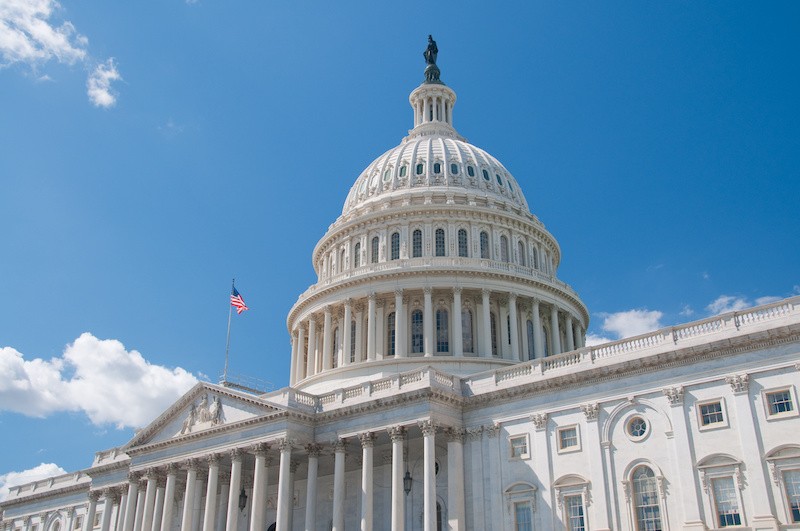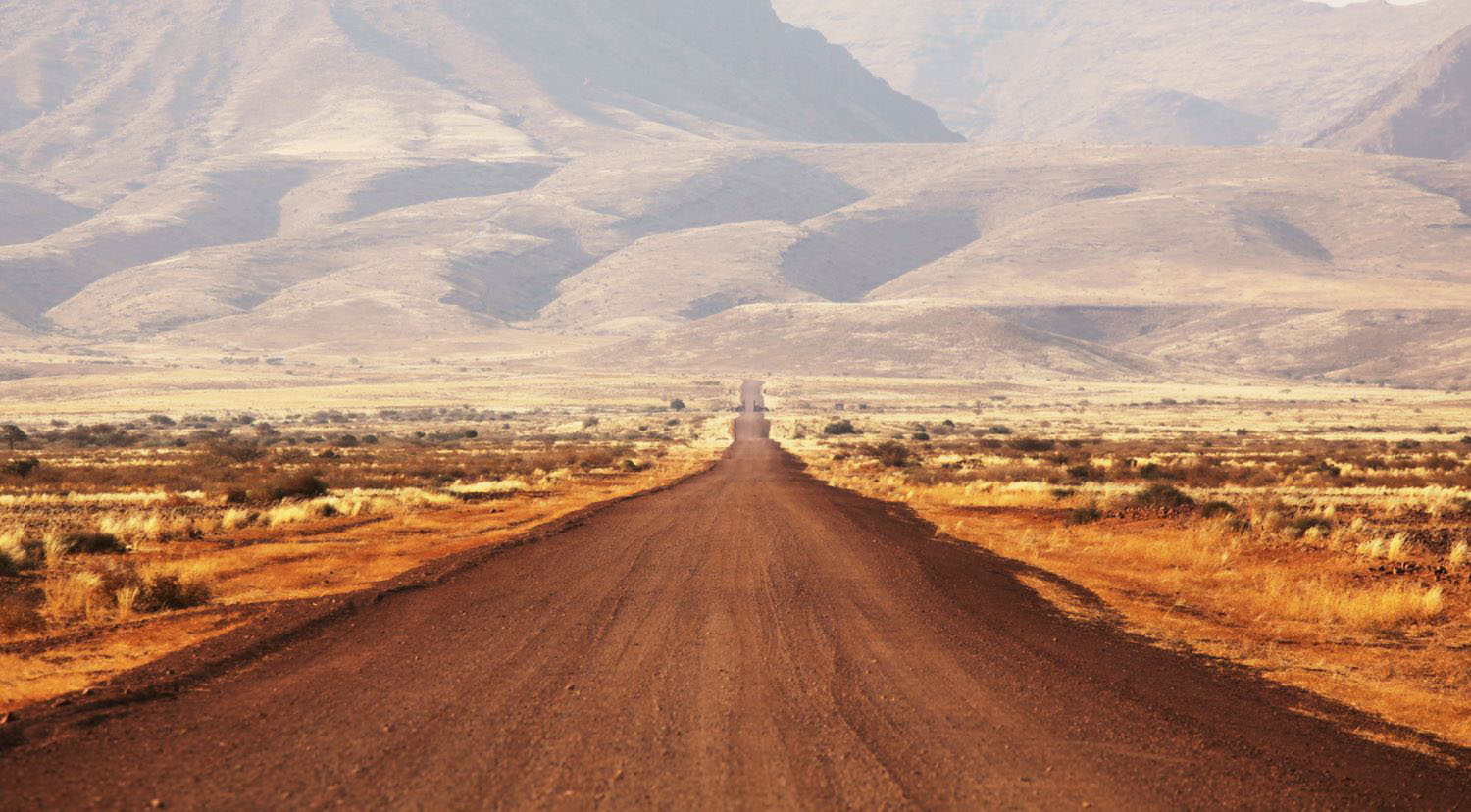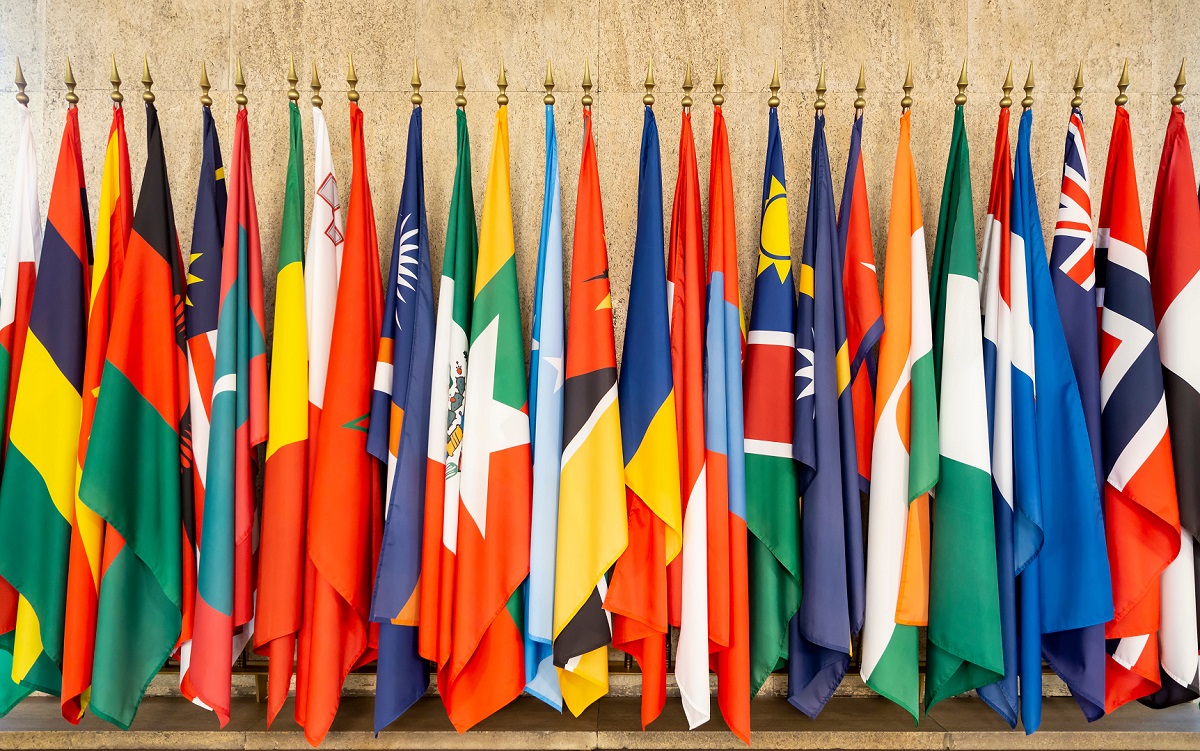Recommended

Blog Post
President Biden sent his second budget request to Congress this week. We dug in to see how some of CGD's most-watched accounts would fare and how the administration's funding asks reflect on its development and humanitarian policy agenda.
Locking in steady investment in pandemic preparedness
Though lawmakers (infuriatingly) have yet to act on the administration's request for urgent supplemental funding to combat COVID-19 at home and abroad, the new budget request from the White House charts a course for more robust, longer-term investment in pandemic preparedness and global health security. Hoping to head off future health threats and limit the need for ad hoc response spending, the administration's bold proposal envisions tens of billions in mandatory funding (shielded from the sometimes fickle annual appropriations process) available over five years to support programs across several departments and agencies. New resources would be used for everything from improving surveillance and streamlining regulation to advancing our ability to fight emerging health threats through the development of new countermeasures. And the ask for five-year mandatory funding includes $6.5 billion for the State Department and USAID—including $4.5 billion for a seed contribution to a new financial intermediary fund (FIF) at the World Bank focused on pandemic preparedness.
The concept behind the FIF—championed by a G20 High-Level Independent Panel (with CGD participation) and a number of leading global health experts—is to provide financing to support and incentivize low- and middle-income country investment in the yawning gaps in pandemic preparedness and to allocate funds across the system to a range of recipients. While this kind of catalytic, multilateral health security financing mechanism has found bipartisan allies on Capitol Hill before, current negotiations over near-term COVID response needs suggest securing mandatory funding will be a big lift. Still, this is exactly the kind of proposal lawmakers should embrace to protect public health and reduce the need for emergency supplemental spending measures. And demonstrated leadership from the United States can help mobilize contributions from other donor countries. Sustained, collective investment is the best chance we have for getting ahead of emerging health threats and guarding against future pandemics.
The requested mandatory spending for USAID would provide for a $500 million contribution over five years to the Coalition for Epidemic Preparedness Innovations (CEPI)—a multilateral alliance with a mission to accelerate vaccine development to stop future health threats. Amid CEPI's success developing a diversified portfolio of COVID-19 vaccine candidates and mitigating some key manufacturing risks, there’s a strong case to make for further US investment.
Table 1. Global health topline (USD millions)
| FY20 Enacted | FY21 Enacted | FY22 Enacted | FY23 Request | |
|---|---|---|---|---|
| Global Health - USAID | $3,194.95 | $3,265.95 | $3,880.00 | $3,956.00 |
| Global Health - State | $5,930.00 | $5,930.00 | $5,950.00 | $6,620.00 |
Note: For all tables and graphs in this blog post, figures may be rounded and do not include supplemental spending.
The regular, discretionary global health budget also includes nearly $1 billion for global health security—with $250 million earmarked for a contribution to the FIF. The budget request's topline global health figures would provide a modest increase in spending, with the lion's share accounted for by the first installment of a three-year $6 billion commitment to the Global Fund to Fight AIDS, Tuberculosis and Malaria.
A boost for bilateral economic assistance—with an emphasis on the Western Hemisphere (and an eye on China)
*FY21 enacted levels do not include emergency supplemental funding.
The FY23 budget request includes increases for both Development Assistance and the Economic Support Fund, with the largest boost to countries in the Western Hemisphere. The ask aligns with the administration's efforts to address the root causes of irregular migration from the Northern Triangle—and President Biden's campaign pledge to invest $4 billion in Central America over four years. Last year, the administration released a dedicated strategy intended to help guide programming in the region.
Evidence has revealed a number of ways in which foreign assistance can help address some of the challenges facing El Salvador, Guatemala, and Honduras. But one of the most promising approaches shown to relieve the pressure to migrate irregularly is to offer safe, legal pathways for migration. So it continues to be encouraging to see the importance of labor mobility factored into the administration's agenda. In fact, the congressional budget justification notes the value of expanding legal pathways and labor protections for migrants as part of this work. But it's worth noting that success on that front could hinge, at least in part, on other line items in the administration's budget—including funding to support US Citizenship and Immigration Services as it works through massive backlogs exacerbated by pandemic-driven closures and shortfalls facing its historically user-fee-funded budget.
Other proposed allocations from these core accounts reflect mounting concerns about China's growing global influence. The administration is hoping to allocate $250 million for a fund named for its Build Back Better World (B3W) initiative, which aims to provide developing countries with an alternative to the People's Republic of China's (PRC) Belt and Road Initiative. And the administration is seeking a $127.5 million investment in the Countering PRC Malign Influence Fund to help countries confront coercive economic and unfair trade practices. Given enormous financing gaps in infrastructure across much of the world, increased US attention in this area is welcome. But the administration must ensure that what's on offer is a credible alternative—transparent financing to deliver high-quality, sustainable infrastructure. And to deliver on that, the administration should look to harness financing through the multilateral development banks since the amounts available bilaterally are extremely modest compared to China’s overseas lending through Belt and Road.
How crises are shaping multilateral spending
President Biden's request would increase US commitments to the multilateral development banks by nearly a quarter compared to the level enacted in the omnibus spending bill. This increase is driven entirely by a boost for the World Bank's International Development Association (IDA)—and with good reason. As the financing needs of IDA client countries—the world's lowest income countries—grew amid the COVID-19 pandemic, the World Bank's shareholders, including the United States, agreed to move IDA's planned replenishment session up by a year. This accelerated timeline allowed IDA to deliver urgent support sooner—helping countries meet immediate health needs and weather the profound economic and poverty challenges triggered by the global health crisis. But since IDA replenishments typically operate on three-year cycles, the decision created an interesting quandary for the US administration. The United States had been scheduled to make a final payment toward its IDA-19 pledge in the coming fiscal year. The advance replenishment meant it would also be looking to double up contributions, delivering the first installment of its three-year, $3.5 billion IDA-20 pledge in the same year.
Rather than risk the sticker shock of a "double payment" to IDA, the administration decided to backload its payments to IDA-20. It also transferred a modest amount of unobligated funding made available through the American Rescue Plan—appropriately intended to support COVID response—toward its FY22 IDA-19 payment. Doing so effectively smooths the ask made of appropriators. While this year's request of $1.43 billion will, in a sense, be split—with $791 million dedicated to fulfilling the US pledge to IDA-19 and $640 million as an initial investment toward its IDA-20 commitment—we can expect a similar ask of $1.43 for IDA from the administration in FY24 and FY25 to finish out the final two years of the IDA-20 replenishment period. Still, it will be important that Treasury socialize plans with lawmakers to ensure they appreciate the vital support IDA is providing countries around the globe during a particularly challenging period—while noting that the boost in financing was made possible by the promise of new donor funding on the horizon.
Even aside from the IDA bump, the budget's topline for multilateral assistance suggests new ambition—but it’s heavily concentrated in climate finance. Despite a frustrating FY22 outcome, the proposed FY23 budget doubles down in its effort to meet President Biden's $11 billion international climate finance target. The request includes $1.6 billion for a contribution to the Green Climate Fund and $550 million for the World Bank-administered Clean Technology Fund—most of which is intended for a loan that would deliver impressive leverage while supporting clean energy projects in lower income countries.
Restoring US humanitarian leadership?
*FY20 and FY21 enacted levels do not include emergency coronavirus response supplemental funding.
When the final FY22 spending package was released, among the biggest disappointments—outside of the failure to include COVID-19 response funding—were its cuts to major humanitarian accounts, namely International Disaster Assistance and Migration and Refugee Assistance. Amid a growing number of protracted conflicts and emerging crises, this funding is as important as ever. The administration's FY23 budget request seeks to increase both accounts—asking for nearly $4.7 billion for USAID's International Disaster Assistance, which supports humanitarian response efforts around the world, including in Afghanistan, Northern Ethiopia, Yemen, Syria, and Venezuela.
While a portion of supplemental spending for Ukraine was intended to meet humanitarian needs, the number of people forced to flee Ukraine in the wake of Russia's invasion is unprecedented. And sadly, it adds to large populations of displaced persons around the world—making US leadership in supporting refugees even more vital. A modest share of the Migration and Refugee Assistance Account also supports the US Refugee Admissions Program. As the US looks to build back its refugee resettlement infrastructure, a boost there is essential. Likewise, while not funded through the international affairs budget, the request includes $6.3 billion for the Office of Refugee Resettlement. As recent CGD research shows, increasing US refugee resettlement isn't just a humanitarian win but an economic one.
Finally, the administration is looking to shore up the Emergency Refugee and Migration Assistance account after needing to tap the reserve fund to meet urgent needs, including those stemming from the humanitarian crisis in Afghanistan.
Refilling MCC’s coffers after a recent rescission
Table 2. Millennium Challenge Corporation (USD millions)
| FY20 Enacted | FY21 Enacted | FY22 Enacted | FY23 Request | |
|---|---|---|---|---|
| Millennium Challenge Corporation | $905.00 | $912.00 | $912.00 | $930.00 |
| Rescission | ($515.00) |
The Millennium Challenge Corporation (MCC) would see a top-up of $18 million compared to the last two years. If funded at this level, it would be MCC’s largest appropriation since FY10. It would be welcome, too, coming on the heels of the FY22 spending bill, which delivered on a requested recission of $515 million in unobligated money previously appropriated for the agency. While much of the rescinded funding had been intended for a compact with Sri Lanka that never got off the ground, our colleague Sarah Rose voiced concern that the move could discourage MCC from cutting the cord on bad partnerships in the future. MCC would use FY23 funding to finance forthcoming compacts in Indonesia and Mozambique. The agency has also promised that half of its funding will go toward climate-related investments.
Getting DFC to $1 billion
The White House is again seeking an increase in resources for the newest US development agency. After requesting a bump up in administrative expenses for DFC in its first budget request, the administration submitted a request for anomalies in September that outlined the need for increases to administrative and program accounts in the context of a continuing resolution. The final FY22 spending package provided some additional funding for DFC, but the administration is hoping to raise the agency's topline to $1 billion in FY23. The proposal is a welcome acknowledgment from the White House that DFC has a lot on its plate. And judging by the frequency with which DFC is invoked—during all manner of congressional hearing—Capitol Hill seems keen on pursuing an ever-expanding role for US development finance. Ensuring that DFC has the resources to deliver will be critical. DFC's inspector general—whose office would also receive a funding boost—recently penned a letter to CEO Scott Nathan, acknowledging the high bar set by DFC stakeholders and pointing to the need to improve the agency's monitoring and evaluation capacity. DFC is actively growing its workforce and will need to cultivate expertise and project pipelines in a range of sectors and regions to have a chance at meeting sky-high expectations. A budget boost would go a long way in supporting the administration's broad agenda for DFC.
Increasing USAID’s workforce to fulfill its agenda
If USAID is to meet today’s global development challenges, it needs a robust and knowledgeable global workforce. And with the agency’s commitment to expand direct partnerships with local organizations as part of its work to advance locally led development—a goal that requires significant personnel time—staffing up will be critical. The president's request includes $1.74 billion in operating expenses for USAID—which will enable the agency to hire 100 more civil servants and 100 more foreign service positions. This increase would follow another bump up in funding for operating expenses between FY21 and FY22.
A grab bag of administration development priorities
Here are a few other parts of the budget request that caught our attention.
- The request for the Department of Health and Human Services includes a proposal to address the growing threat of antimicrobial resistance (AMR). Specifically, it would employ advance market commitments (AMCs) to spur AMR innovation. As our colleagues have pointed out, pull financing mechanisms, such as AMCs, have been an underused tool when it comes driving innovation in global health. And while the US government faces some regulatory and legal barriers to employing pull mechanisms, CGD analysis demonstrates there are creative ways to address these obstacles. And AMR is a growing challenge in desperate need of investment. In fact, lawmakers on both sides of the aisle have lined up in support of a legislative proposal that would direct emergency spending to the development of new accessible and affordable treatments for resistant infections. And that measure has also gained traction in the House as part of a broader package advancing US biomedical research.
- On International Women's Day, the administration announced plans to request $2.6 billion for programs that promote gender equality worldwide, doubling FY22 funding. The request includes $200 million for the Gender Equity and Equality Action Fund, but other details remain sparse. We’re excited by the laudable topline commitment, and hope the administration follows up with more on how it intends to tackle gender equity and track the impacts of any money Congress delivers. Our colleagues have argued the administration should pursue investments that would strengthen the global care economy (already among its domestic priorities) to help address the disproportionate share of unpaid care and domestic work shouldered by women and girls around the globe. Providing a contribution to the World Bank’s Early Learning Partnership would be a great step in that direction.
- For the second year running, the administration included a request for an explicit spending directive of $30 million for USAID's Development Innovation Ventures.
Disclaimer
CGD blog posts reflect the views of the authors, drawing on prior research and experience in their areas of expertise. CGD is a nonpartisan, independent organization and does not take institutional positions.





